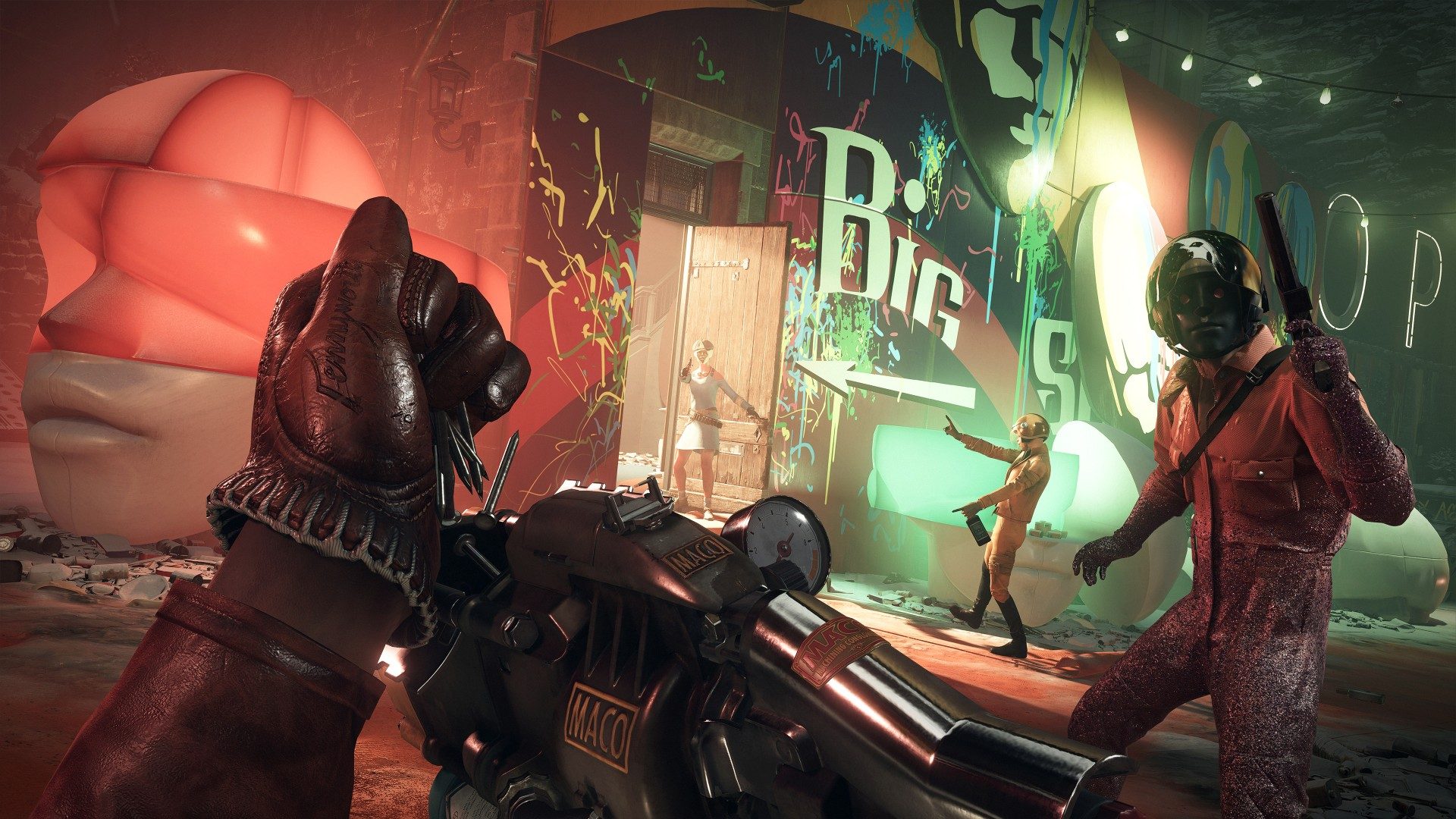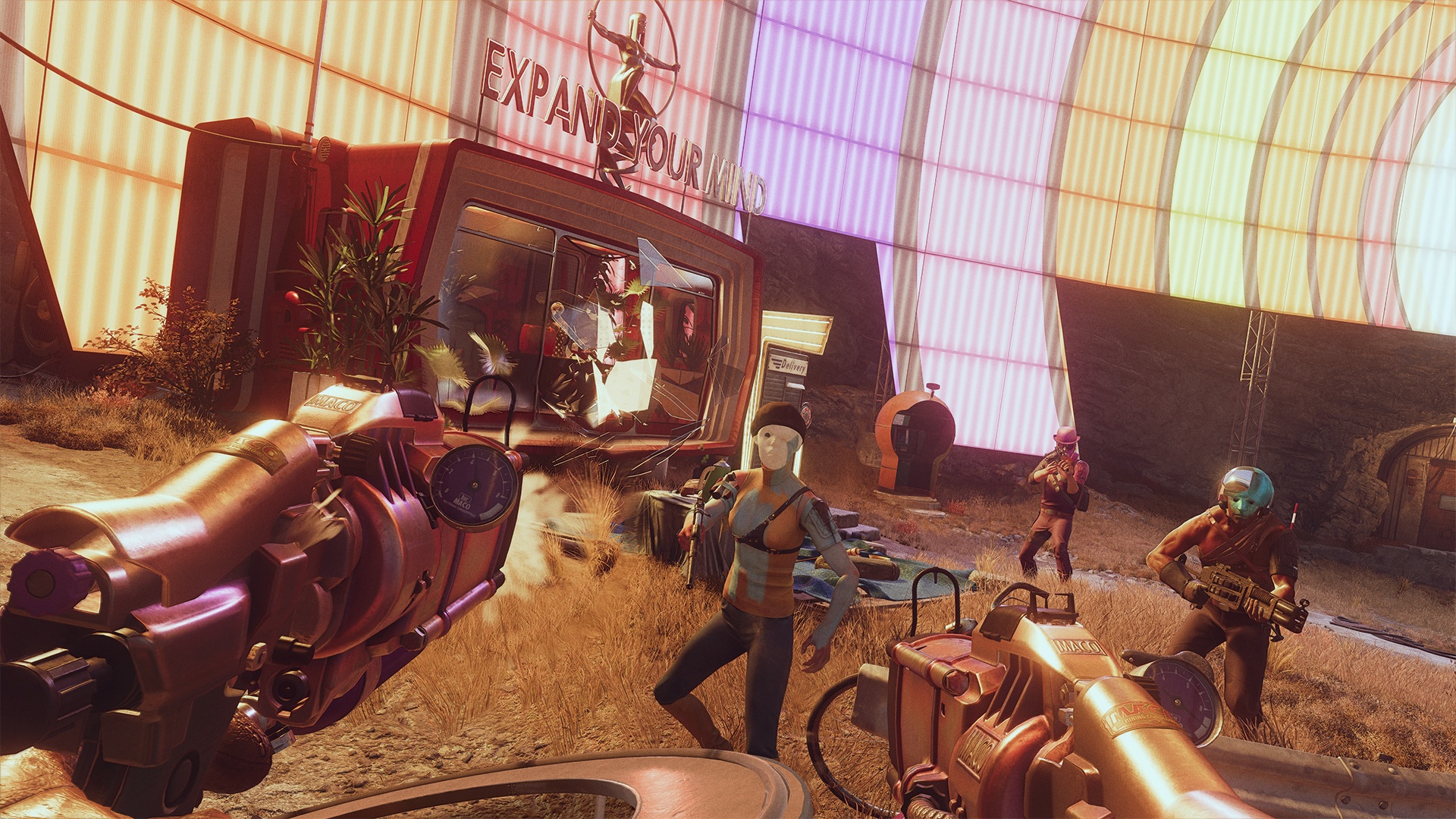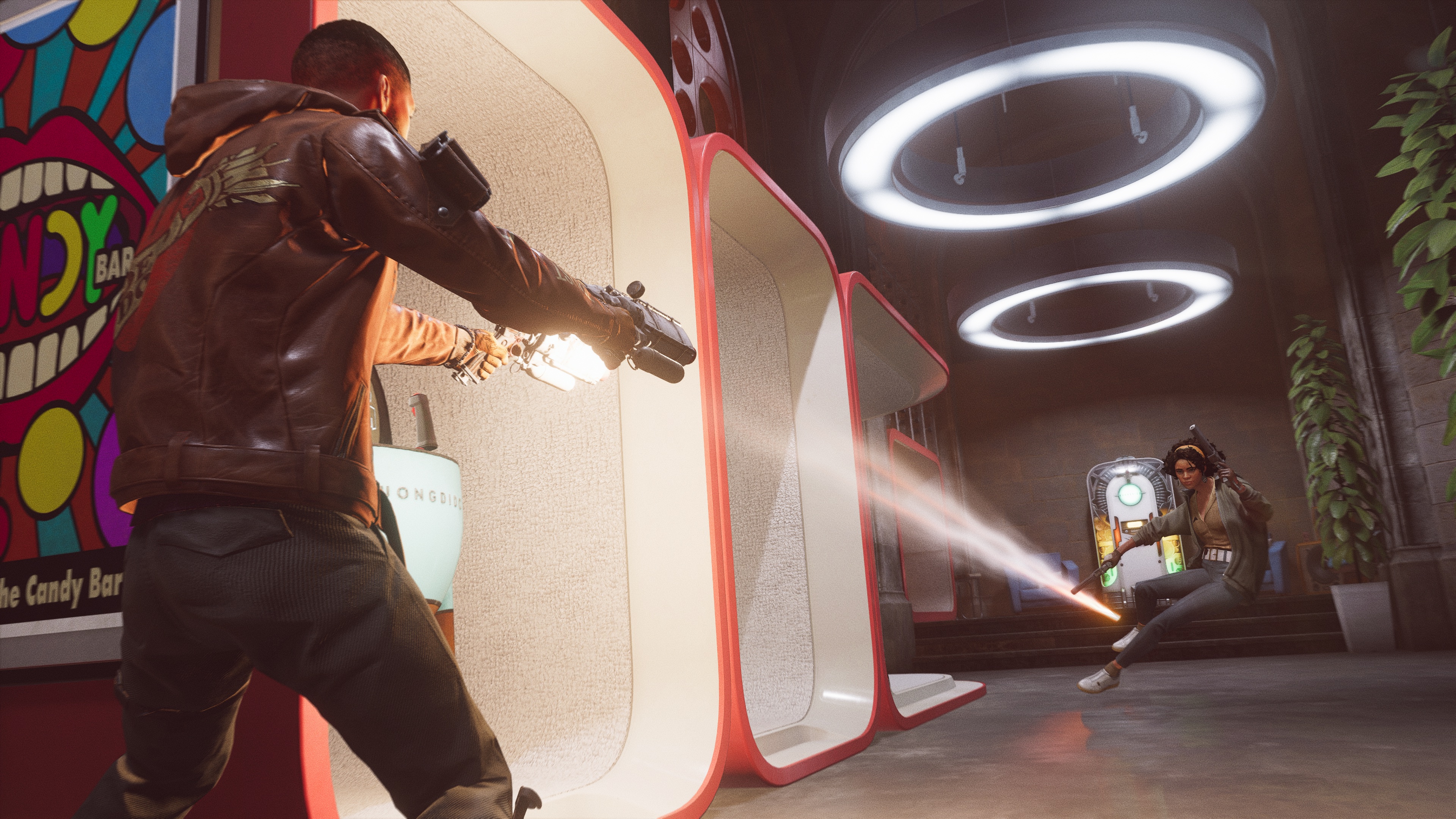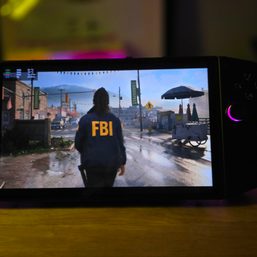SUMMARY
This is AI generated summarization, which may have errors. For context, always refer to the full article.

Deathloop was reviewed on the PlayStation 5, with publisher-provided code, and will release on September 14.
Deathloop has a deceptively simple premise: you’re trapped in a never-ending time loop, doomed to relive the same day over and over again, and the only way to break free from it is to kill eight specific targets in a single loop.
But this is a very different experience from what you might be thinking. I’d even go as far as to say that this is the most out of left field first-person shooter I’ve ever played going by the 10 or so hours I’ve spent with it.
Perhaps shooter isn’t even the right word to describe the game. While it does play like a shooter, Deathloop at its core is a murder puzzle, as developer Arkane Lyon describes it. Unlike other shooters that have you relying on quick reaction times and twitchy reflexes, your greatest weapon in this game is knowledge.
Like how protagonist Colt wakes up at the start not knowing who he is, where he is, or what’s happening around him, you’ll play through the first few hours without a clue of how the various systems work, often falling back to any stealth or shooter experience you might already have from games under your belt. I mean I did too, and everyone probably will too if they go into this entirely blind – the way it’s meant to be played.
However, when the game finally stops holding your hand and lets you loose in its world, you’ll realize that there’s more to offing your targets than just mindless shooting and stabbing. There’s a lot of systems at play, so let me try to break some of them down to better explain what I’m talking about.

Knowledge is power
First, the mysterious island you’re in, Blackreef, is divided into four distinct districts: The Complex, Updaam, Karl’s Bay, and Fristad Rock. You can explore these districts during different periods of the day, of which there are four as well: morning, noon, afternoon, and evening.
Before every mission, you’re free to choose what district you want to go to and during what period of the day. The period is particularly important because the districts evolve depending on the time of day.
There’s a clockwork nature to how events in Blackreef transpire. Your enemies, including your eight targets, have patterns of activities in different periods of the day. A patrol could be guarding an area during the morning and be somewhere else during the evening. Your targets can similarly be in different places and be doing different things depending on when you decide to seek them out.
You can explore a district all you like, and time won’t advance. But once you leave the district or die, time will move forward to the next period. At the end of the day, everything resets, meaning all the enemies you’ve killed will respawn in the next loop. The only consolation is that you now know more about Blackreef and your targets.
Your goal, as I mentioned earlier, is to hit all eight targets, shown in the photo below, in a single day. This, as you might guess, is easier said than done, involving careful planning and consideration, where you’ll have to use all the clues you uncover to create the ideal loop that gets you near every single target. It’s like perfectly lining up a bunch of dominoes and making sure that they all topple with just one push.

Clues are gathered by collecting messages, notes, and audio logs scattered across the map as well as eavesdropping on conversations between Blackreef’s trigger-happy citizens.
These pieces of intel reveal things you’ll need to break free from the time loops, such as codes of locked weapon stashes, your targets’ whereabouts, or unique kill opportunities, all of which you can use to your advantage.
In short, the more you know, the deadlier you become.
The game rewards patience and experimentation. It doesn’t matter how many times you die or play through the same loop again, if you’re picking up useful pieces of intel along the way, you’re progressing. This is why after playing through numerous loops it can feel so satisfying to finally craft a sound plan and see it all play out to a tee, culminating, of course, with the death of your targets.
There aren’t many games that let you do this in such a stylish and meticulous manner. The only other game I could probably think of is Hitman. And Deathloop has drawn its fair share of comparisons to Hitman because of this.
Both games have you engaging in that same process of finding windows of opportunity in the clockwork nature of your targets and the surrounding environment. You’re essentially learning patterns in the games’ design and exploiting openings in them to accomplish your missions, making them feel more like puzzles rather than shooters.
What makes experimenting even more enjoyable is Deathloop’s sandbox gameplay, which gives you a heap of options to dispatch your enemies or evade them.
There’s never just one way to do things in the game. The level design works in such a way where you’re not restricted to a stealth or guns blazing-only approach. There are certain scenarios where a mix of the two works, which I love.
Factoring in that you have a large arsenal of guns and gadgets, along with a selection of supernatural abilities, there’s just no limit to how you’ll go about offing your eight targets.

Rival assassins
But while you try to break the time loop, your rival assassin, Juliana will try to foil your plans. She can either be an AI or an invading player. Regardless of who’s in control, though, she’s a threat to you.
Juliana will usually try to ambush you when you least expect it. She’s like a boss of sorts that pop-up on numerous occasions, keeping you on your toes just when you think you have everything under control.
I wasn’t able to try yet the multiplayer feature where another player invades, but I did trade blows with the AI-controlled Juliana a couple of times.
She is no pushover. Her AI is almost as unpredictable and cunning as a real player, which I think is impressive.
Initially, I thought this Demon’s Souls-esque invasion feature might prove more annoying than fun, but I eventually grew to appreciate its inclusion because of how it’s implemented.
Having another player in your game doesn’t break the immersion. The other player is Juliana, the character in the game, and not the player. You probably won’t be able to tell that it’s another player too. The game doesn’t tell you, and there’s no voice chat. So in a way, you’re tricked into thinking that you’re just fighting a stronger, more sophisticated enemy.
I also appreciate that you have the option to turn the feature off and stick to the AI if that’s how you want to play. You can even set it to only allow your friends to invade. The game is not forcing the feature on you if you want to play alone, and I love that.
You can similarly play as Juliana and invade other Colts in the world.
Funky music
Another thing I love about Deathloop is its superb 60s-inspired art direction. The retro-futuristic take on the character designs, from their hair to their clothes, are all so stylish. Even Blackreef’s environments capture the decade’s psychedelic vibe with strong use of vibrant colors. The visuals simply pop, and there were several times when I just stopped to admire them.
The music also helps elevate the game’s overall presentation with funky, Jame Bond-esque tracks serving as the background to your murder sprees.
I’d say everything in the presentation department just hits the mark, and all of it pulls you deeper into the game’s crazy and weird world.
Also, the game makes great use of the DualSense controller’s features. Your guns, for example, can jam, and when it does, you can only press your trigger about halfway. Even without looking at the on-screen animation, you immediately know that you can’t shoot and have to fix your gun.
It also uses the built-in speakers of the controller to play voice messages and Colt’s communications with Juliana. The volume can at times be too soft, but I like how it kind of creates the effect that you’re hearing the conversations through a radio.

Three graphics options
Performance-wise, the game generally runs smoothly in the three different graphics options: performance mode, visual quality mode, and raytracing mode.
The game is set to performance mode by default, which is more than capable of maintaining 60fps at a dynamic 4K resolution.
However, I spent most of my time in visual quality mode, which prioritizes resolution over frame rate. For the most part, the game was still able to hit 60fps without any noticeable hiccups.
Raytracing mode, meanwhile, adds new lighting effects at the cost of performance and visual quality. It caps at 30fps at a dynamic 4K resolution. I didn’t spend too much time on this mode, but from my experience, the visual differences are quite subtle.
Personally, I would still pick performance or visual quality mode over raytracing for the bump in frame rate.
It’s also worth mentioning that I did run into a couple of freezing issues while playing the pre-release version of the game. There was one instance when it completely froze my PS5, and I was forced to do a hard reset. Not a big worry, though, as I think a recent patch has already resolved the issue.
When you look at Deathloop, it’s easy to take the individual gameplay elements and make sense of them by comparing them to different games in different genres. But when you take all of them as a whole, it feels as though the game takes another form. And that, I think, is the genius of developer Arkane, who is clearly in their element here.
It’s a game that at first intrigues you then eventually allures you with its multilayered mysteries and complex systems, and it does all of this with so much style and pizzazz. I mean I’m already devising new ways to kill my targets as I’m writing this review, so you can bet that I’m hooked. I’d even argue that this is a strong contender for game of the year.
Just a tip: If you plan to play Deathloop, which I think you should if you like stealth games, avoid spoilers as much as possible. Learning about the game’s systems for yourself is what makes it so fun. – Rappler.com
Add a comment
How does this make you feel?
![[GAME DIARY] ‘FFVII Rebirth’ entry No. 1: Did anyone else get demolished by Midgardsormr?](https://www.rappler.com/tachyon/2024/03/ffvii-midgardsormr.jpg?resize=257%2C257&crop=414px%2C0px%2C1011px%2C1011px)




There are no comments yet. Add your comment to start the conversation.